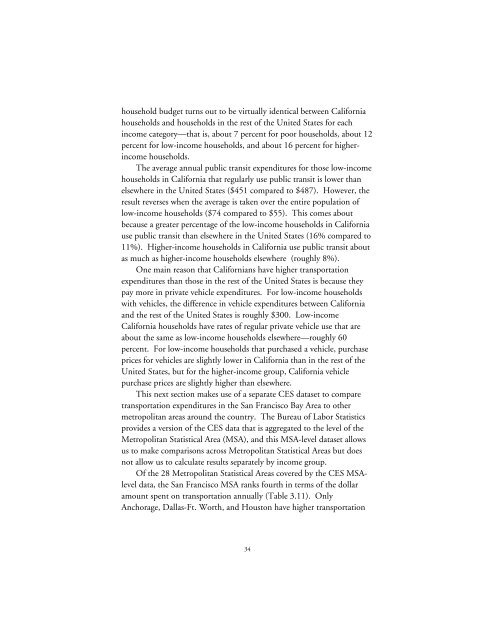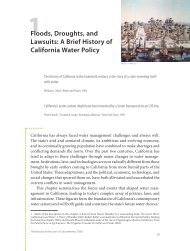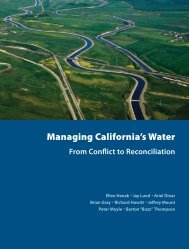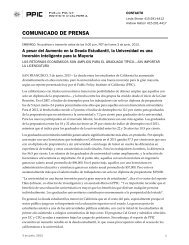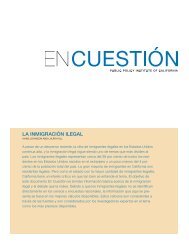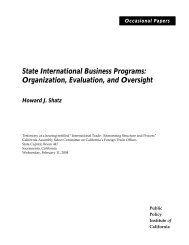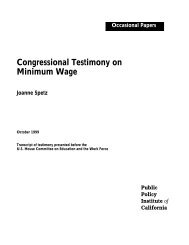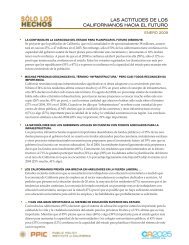Transportation Spending by Low-Income California Households ...
Transportation Spending by Low-Income California Households ...
Transportation Spending by Low-Income California Households ...
You also want an ePaper? Increase the reach of your titles
YUMPU automatically turns print PDFs into web optimized ePapers that Google loves.
household budget turns out to be virtually identical between <strong>California</strong><br />
households and households in the rest of the United States for each<br />
income category—that is, about 7 percent for poor households, about 12<br />
percent for low-income households, and about 16 percent for higherincome<br />
households.<br />
The average annual public transit expenditures for those low-income<br />
households in <strong>California</strong> that regularly use public transit is lower than<br />
elsewhere in the United States ($451 compared to $487). However, the<br />
result reverses when the average is taken over the entire population of<br />
low-income households ($74 compared to $55). This comes about<br />
because a greater percentage of the low-income households in <strong>California</strong><br />
use public transit than elsewhere in the United States (16% compared to<br />
11%). Higher-income households in <strong>California</strong> use public transit about<br />
as much as higher-income households elsewhere (roughly 8%).<br />
One main reason that <strong>California</strong>ns have higher transportation<br />
expenditures than those in the rest of the United States is because they<br />
pay more in private vehicle expenditures. For low-income households<br />
with vehicles, the difference in vehicle expenditures between <strong>California</strong><br />
and the rest of the United States is roughly $300. <strong>Low</strong>-income<br />
<strong>California</strong> households have rates of regular private vehicle use that are<br />
about the same as low-income households elsewhere—roughly 60<br />
percent. For low-income households that purchased a vehicle, purchase<br />
prices for vehicles are slightly lower in <strong>California</strong> than in the rest of the<br />
United States, but for the higher-income group, <strong>California</strong> vehicle<br />
purchase prices are slightly higher than elsewhere.<br />
This next section makes use of a separate CES dataset to compare<br />
transportation expenditures in the San Francisco Bay Area to other<br />
metropolitan areas around the country. The Bureau of Labor Statistics<br />
provides a version of the CES data that is aggregated to the level of the<br />
Metropolitan Statistical Area (MSA), and this MSA-level dataset allows<br />
us to make comparisons across Metropolitan Statistical Areas but does<br />
not allow us to calculate results separately <strong>by</strong> income group.<br />
Of the 28 Metropolitan Statistical Areas covered <strong>by</strong> the CES MSAlevel<br />
data, the San Francisco MSA ranks fourth in terms of the dollar<br />
amount spent on transportation annually (Table 3.11). Only<br />
Anchorage, Dallas-Ft. Worth, and Houston have higher transportation<br />
34


